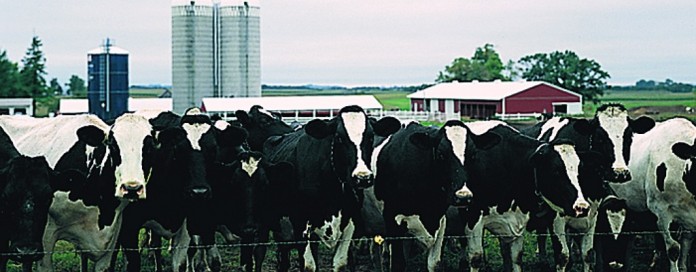Some people like change; other people, not so much. Like it or not, change is coming for an agricultural community that has been buffeted by changing prices and regulations for the past several years.
Interest rates will be increasing for the first time in a long, long time. I have not personally experienced the challenges rising interest rates bring to the farm table, especially for variable interest loans, but remember hearing whispers of what happened to some farms when interest rates soared to unprecedented levels decades ago. However, 0% interest rates forever are not realistic either.
A bit of good news is that it appears we will have some stability in the IRS section 179 provisions, which gives us an opportunity to manage income tax liabilities on an ongoing basis.
Success
Back in the “good old days,” farmers focused on production management. If a farmer worked hard and the weather was decent, there was usually enough cash left for the family. Short on cash? Add a few more cows or acres, work a little harder, mission accomplished. Business management consisted largely of getting reasonable numbers together to put together the Schedule F for income taxes.
Today, production management and business management are a partnership. Over time, one will not succeed without the other.
Just as there are targets and guidelines for production of milk and crops, there are targets and guidelines for the business side. What are the key numbers? Why are they important? What do they tell us about the farm today? What are the implications for the future? How can they be changed? When are your numbers good enough?
One thing that doesn’t change is that some farms always do better than other farms. From the business side, we can look to the farms that participate in the Ohio Farm Business Analysis and Benchmarking Program. The high 20% of those farms always perform significantly better than the average of all farms.
For instance, in 2014, all farms averaged a net return of more than $1,200 per cow (remember, a stunning year, unlike 2015!) while the high 20% averaged a net return of more than $2,400 per cow.
Simply put, how can you move your farm into the top third of all farms, and how do you keep it there?
Get some help
We don’t often have good opportunities to sharpen those business management skills, but across northern Ohio, there are three opportunities coming up, starting in just a couple weeks. These multi-week sessions focus the business of farming and are important for both new and established farmers. The dates for these multi-session farm management workshops and seminars include:
- Starting Jan. 7, Wayne County Extension, 330-264-8722, http://wayne.osu.edu
- Starting Jan. 7, Darke County Extension, 937-548-5215, http://darke.osu.edu.
- Starting Feb. 2, Fulton County Extension, 419-337-9210, http://fulton.osu.edu.
Brochures for each program is also posted under “News to Use” at http://farmprofitability.osu.edu. These seminars run for about two hours each evening for four (Fulton County) or five evenings (Wayne and Darke counties). Preregistration is required and should be completed soon as class size is limited.
Production management and business management is a partnership on successful farms. Invest in the future success of your farm business now.












